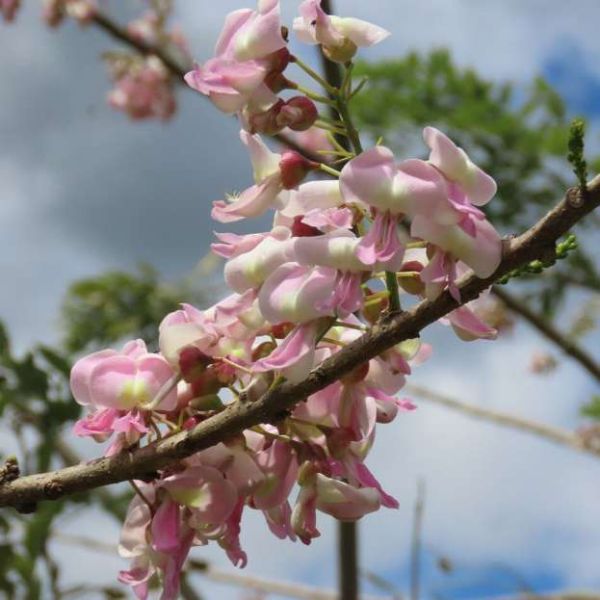Gliricidia Sepium Seeds (Quick Stick, Mexican Lilac)
Gliricidia Sepium Seeds (Quick Stick, Mexican Lilac)
G. sepium is also used for its insect repellent properties by farmers in some Latin American countries to repel insects. The leaves are...

Delivery
All orders shipped with UPS Express.
Always free shipping for orders over US $250.
All orders are shipped with a UPS tracking number.
Returns
Items returned within 14 days of their original shipment date in same as new condition will be eligible for a full refund or store credit.
Refunds will be charged back to the original form of payment used for purchase.
Customer is responsible for shipping charges when making returns and shipping/handling fees of original purchase is non-refundable.
All sale items are final purchases.
Help
Give us a shout if you have any other questions and/or concerns.
Email: contact@domain.com
Phone: +1 (23) 456 789
Availability: In stock
SKU
Gliricidia Sepium
Gliricidia sepium, known as Gliricidia, Nicaraguan cocoashade, quick stick, Mexican lilac, mother of cocoa, Pi¤on Cubano in the Dominican Republic, Madreado in Honduras; Kakawate in the Philippines, is native to seasonal dry forest areas of Mexico and Central America, Belize, Costa Rica, El Salvador, Guatemala, Honduras and Nicaragua.
Gliricidia sepium is a small to medium-sized leguminous tree that can grow up to 10-12 meters high. Its bark is smooth, from whitish grey to deep red-brown.
It has alternate and pinnate leaves of approximatively 30 cm long. Each leaf is composed of leaflets that are about 2 to 7 cm long and 1 to 3 cm wide. Inflorescences appear as clustered racemes, 5-15 cm long. The tree has pink to lilac flowers borne singly with 20-40 per raceme. Gliricidia sepium? fruit is a 10-18 cm green pod when unripe and becomes yellow-brown with maturity. Each pod produces 3 to 10 round yellow-brown seeds.
Individual flowers persist for a variable length of Most flowers last only 24-48 hours but this depends on climatic conditions.
Flowering begins at the start of the dry season at about 6-8 months of age. A tree can produce vast numbers of flowers (up to 30,000) that attract a wide variety of insects. In very wet areas, plants may flower but produce little if any fruit.
Flowers can be fried and eaten.
Its leaves are rich in protein, highly digestible and low in fibre and tannin. There is evidence of improved animal production (both milk and meat) in large and small ruminants when G. sepium is used as a supplement. However, non-ruminants fed on G. sepium have shown clear signs of poisoning.
In its native range, Gliricidia sepium is often found on highly eroded soils of volcanic origin with pH 4.5-6.2, but is also found on sands, heavy clays and slightly alkaline, calcareous limestone soils. Gliricidia does not grow well on wet or waterlogged soils and the tree does not tolerate medium to heavy shade.
Hardiness zone: 10-15
| Common name | Quickstick |
|---|---|
| Family | Fabaceae |
| Genus | Gliricidia |
| Species | Gliricidia sepium |
| Therapeutic uses | Crude extracts have been shown to have antifungal activity. Reported to be expectorant, sedative and suppurativem G. sepium is a folk remedy for alopecia, boils, bruises, burns, colds, cough, erysipelas, fever, fractures, gangrene, headache, itch, prickly heat, rheumatism, skin tumours, ulcers and urticarial. G. sepium is also used for its insect repellent properties by farmers in some Latin American countries to repel insects. The leaves are ground up and combined with water. The animal is then bathed with the resulting paste. According to some of the farmers, if this is repeated every 7-14 days, the number of torsalo (tropical warble fly) infections is decreased. No published studies could be found to substantiate this claim. |
| Germination | Sow the seeds at the surface of a sowing mix with sand or perlite at about 22-25øC. Germination should occur in 1-3 weeks. Following germination, trees grow extremely quickly and may attain a height of 3 m before flowering at 6-8 months. |
| Price View | Price Range |

